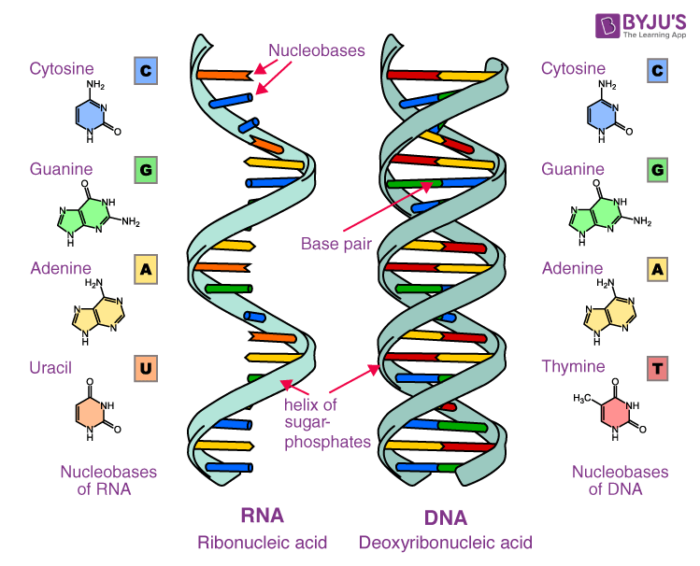What are Nucleic Acids?
Nucleic acids are long-chain polymeric molecules, the monomer (the repeating unit) is known as the nucleotides and hence sometimes nucleic acids are referred to as polynucleotides.
Deoxyribonucleic acid (DNA) and ribonucleic acid (RNA) are two major types of nucleic acids. DNA and RNA are responsible for the inheritance and transmission of specific characteristics from one generation to the other. There are prominently two types of nucleic acids known to us.
Related Topics
Deoxyribonucleic Acid (DNA)
Chemically, DNA is composed of a pentose sugar, phosphoric acid and some cyclic bases containing nitrogen. The sugar moiety present in DNA molecules is β-D-2-deoxyribose. The cyclic bases that have nitrogen in them are adenine (A), guanine (G), cytosine(C) and thymine (T). These bases and their arrangement in the molecules of DNA play an important role in the storage of information from one generation to the next one. DNA has a double-strand helical structure in which the strands are complementary to each other.
Ribonucleic Acid (RNA)
The RNA molecule is also composed of phosphoric acid, a pentose sugar and some cyclic bases containing nitrogen. RNA has β-D-ribose in it as the sugar moiety. The heterocyclic bases present in RNA are adenine (A), guanine (G), cytosine(C) and uracil (U). In RNA the fourth base is different from that of DNA. The RNA generally consists of a single strand which sometimes folds back; that results in a double helix structure. There are three types of RNA molecules, each having a specific function:
- messenger RNA (m-RNA)
- ribosomal RNA (r-RNA)
- transfer RNA (t-RNA)

The Functions of Nucleic Acids
- Nucleic acids are responsible for the transmission of inherent characters from parent to offspring.
- They are responsible for the synthesis of protein in our body
- DNA fingerprinting is a method used by forensic experts to determine paternity. It is also used for the identification of criminals. It has also played a major role in studies regarding biological evolution and genetics.
To learn more about other functions of nucleic acids download BYJU’S- The Learning App.


This website always help me in study lectures rather than others